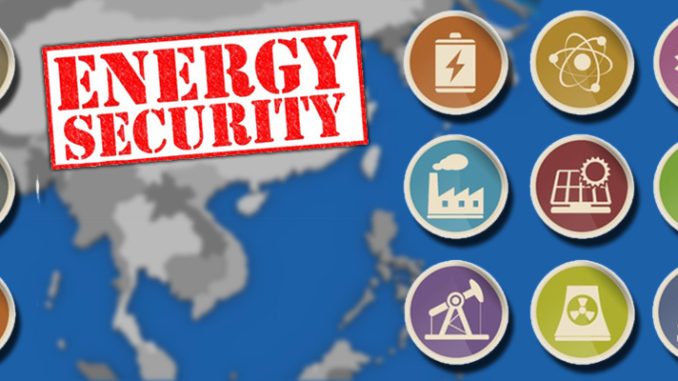
The Fukushima nuclear disaster demonstrated the magnitude of devastation when energy security is prioritized over human security. No doubt, the task of balancing the two needs is immense and difficult trade-offs need to be made at different times. But policy decisions in these two domains cannot be made without adequate consultation with the public, consideration for their preferences, and a shared vision for the future.
The energy context
Energy security is of grave concern in Southeast Asia and most indicators point to more coal-intensive energy generation in the near future. According to the 2013 World Energy Outlook’s (WEO) Special Report, 1 the relative abundance and affordability of coal in Southeast Asia will likely boost its share of electricity generation from less than one-third in 2013 to almost 50 percent in 2035, mainly at the expense of natural gas and oil. Indeed, three-quarters of the thermal capacity now under construction is coal-fired and operating at very low efficiency rates of just 34 percent due to the almost exclusive use of subcritical technologies.
This path of development is being driven by large fossil-fuel subsidies from governments in the region that amounted to $51 billion in 2012. The dilemma is that these subsidies are needed to keep electricity prices affordable to the poor. Yet more than 130 million people in the region (more than one-fifth of the population) still lack access to electricity. As the WEO report notes, while access to electricity are very high in Brunei Darussalam, Malaysia, Thailand and Singapore, levels are below 75percent in Cambodia, Myanmar, the Philippines and Indonesia.
Key energy producing countries like Indonesia, Malaysia and Thailand have made significant efforts to reform energy subsidies, but either lack depth or implementation. Subsidies, therefore, continue to distort energy markets and hold back development of other more environmentally friendly, decentralized sources of electricity in the renewable energy sector. While Southeast Asian governments are increasingly looking to diversify their energy portfolio into biofuels, renewable energy, smart grids and efficient technologies, the scale and magnitude of investments needed to make these technologies viable remain hindered by the existing subsidy regime.
Going nuclear
Southeast Asian nations are also increasingly turning to nuclear power in spite of the Fukushima disaster. With increasing pressure from economic development, population growth, depleting resources, increasing (and competing) demand from China and climate change, nuclear power does present itself as a viable non-emitting baseload source of electricity.
Vietnam, with the most ambitious plan in the region, wants to build eight plants by 2030 producing 16,000MW with the help of Russia and Japan. Thailand has two reactors in the pipeline and is considering four more. Malaysia is looking to build two reactors in the southern coast of Johor by 2021, while Indonesia is also looking to build four plants on Banka Island and West Kalimantan, producing 6,000MW by 2025. Loas is also in talks with Russian atomic power corporation, Rosatom, to build two large reactors with generating capacities of 1000MW-1200MW each. This is part of the government’s plan to generate revenue from exporting power to adjacent nations like Vietnam, Thailand, Cambodia, and further afield like Singapore. The Philippines has made no major plans but is debating reviving operations in a nuclear plant in Bataan built by Westinghouse in the 1980s but never commissioned due to safety concerns.

The risks and governance
In considering what the right energy mix should be for the future and whether nuclear power should be part of the solution, important questions need to be asked about what the risks are, who will be affected, how they are likely to be distributed across the region, who should be responsible, and how to prioritise them. These are questions of governance that bring questions of human security deep into the heart of energy security issues.
This is a particularly complex exercise in Southeast Asia given that resource endowments are vastly uneven across countries, which also operate within immensely different cultures and political systems. Geographical proximity further increases the risk of transboundary impacts from a nuclear fallout. Questions of justice will quickly follow if richer nations like Thailand and Singapore are benefiting from nuclear power produced in Laos, while Loatians have to bear the full burden of risks from a nuclear accident, environmental and health impacts from everyday operations, etc. Indeed, the enduring problem of transboundary haze pollution is an example of the enormity of the challenge Southeast Asian nations face in managing transboundary risks.
This does not mean that efforts to establish regional linkages to secure energy supply are inevitably doomed to failure and uncontrollable contagion effects. But the right safeguards, institutional arrangements and governance structures must be in place to ensure the highest level of not just safety but accountability.

Starting with the future
Without a common vision for what the future of each country and the region as a whole should look like, policy decisions on energy security would likely result in unintended negative consequences and greater conflict which will ultimately undermine the goal of achieving energy security. Without broadening the scope of energy security to be simultaneously about human security, risks will continue to be underestimated and the solutions over simplified. This will likely result in larger systemic instabilities as environmental and social feedbacks produce rippling effects on political and economic institutions.
But how is one to respond to these risks and uncertainties? Looking back is crucial in enabling us to learn from other people’s mistakes, but progress, modernity and sustainable development requires us to imagine the future in order to guide the decisions we make today.
The Association of Southeast Asian Nations (ASEAN) is arguably the best place to begin thinking about a collective regional future. It is, indeed, encouraging to see that the leadership have been taking steps in this direction with the ASEAN Community Vision 2025 to be released in November this year. While it is paramount the at this vision is formulated by those with the power to make key policy decisions (and reform); it is equally important that the process is not done entirely behind the closed doors of the High Level Task Force. It must be co-produced and co-envisioned by the people of ASEAN in order to have buy-in from the public. A vision that reflects the values and preferences of the community is a vision that the community will feel they have a stake in protecting, securing and making sacrifices for. It is with collective vested interest that decisions can then be made about priorities and risk-benefit trade-offs that are just, equitable and acceptable.
Deliberative mechanisms required for such forms of collective decision-making abound 2 and can be modified to suit the socio-political and cultural contexts of Southeast Asian nations. But political will must come from the top. Conditions are ripe for ASEAN leaders to evolve with the times and expand their thinking about the future of energy and human security in Southeast Asia.
Dr. Catherine Mei Ling Wong
The Cairns Institute
James Cook University
YAV, Issue 18, Kyoto Review of Southeast Asia. November 2015
For Past Young Academic’s Voice articles —
Notes:
- International Energy Agency. (2013). Southeast Asian Energy Outlook: World Energy Outlook Special Report. Paris: OECD/IEA. Retrieved at <https://www.iea.org/publications/freepublications/publication/SoutheastAsiaEnergyOutlook_WEO2013SpecialReport.pdf> ↩
- See for example Wong, C. M. L. (2015). The Mutable Nature of Risk and Acceptability: A Hybrid Risk Governance Framework. Risk Analysis, Forthcoming; and Lockie, S. (2001). SIA in review: setting the agenda for impact assessment in the 21st century. Impact Assessment and Project Appraisal, 19(4), 277-287. ↩

